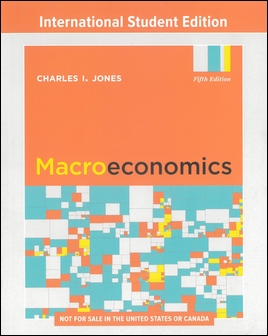書籍分類

Macroeconomics 5/e
作者:Charles I. Jones
原價:NT$ 1,850
ISBN:9780393417333
版次:5
年份:2021
出版商:W. W. Norton & Co.
頁數/規格:660頁/平裝彩色
版次:5
年份:2021
出版商:W. W. Norton & Co.
頁數/規格:660頁/平裝彩色
內容介紹 本書特色 目錄 作者介紹
- Description
Modern and practical macroeconomics
Chad Jones’s Macroeconomics teaches students to think like modern macroeconomists, with strong and engaging growth coverage and a more intuitive approach to models. Praised by adopters for its clear explanations, flexible organization, timely case studies, data, and emphasis on problem solving, Macroeconomics gives students the practical tools they need to understand and analyze the macroeconomy. This innovative text makes macroeconomics less complicated without sacrificing rigor.
分類位置:
商管 > 經濟 > 總體經濟學


